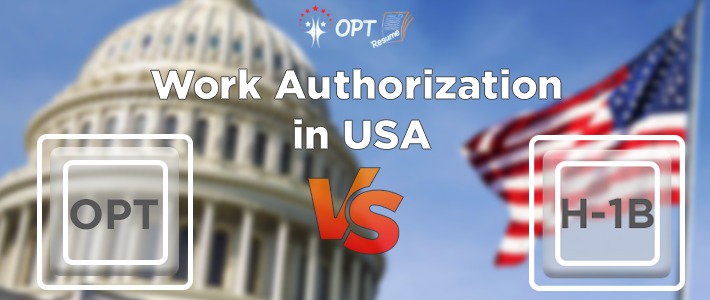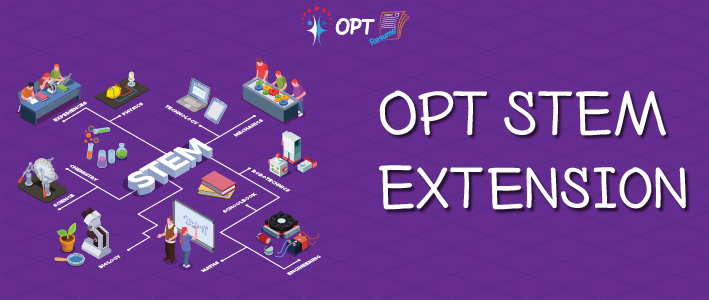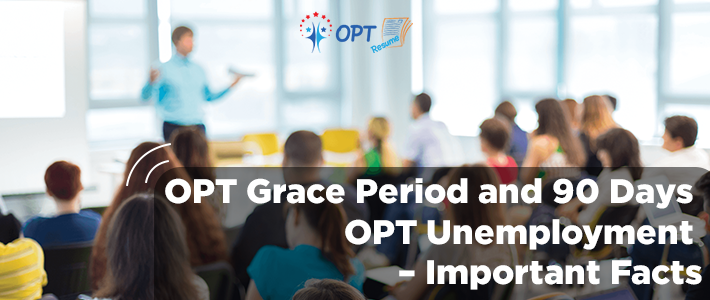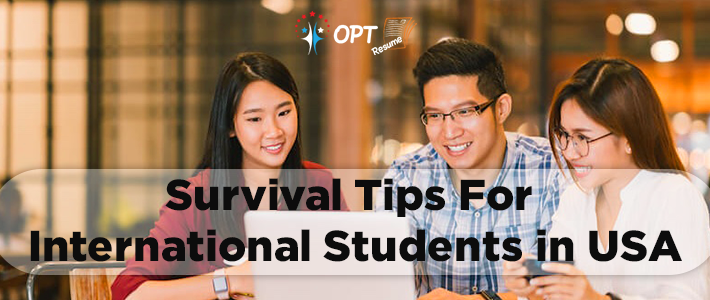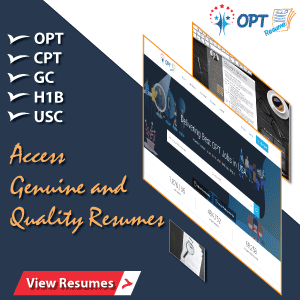The thought of working in the USA attracts many foreign people. But it is not that easy to work in the USA. This requires special permission. The government provides the permission/ visa under a special clause, known as the H-1B visa.
International students can come and study in the USA under an F-1 visa. Under this visa, eligible students can also work. The OPT & CPT program is provided for students with F-1 visa status.
As both of them are spoken of while considering working, many people get confused about the difference between OPT and H-1B. There is a vast difference between both of these terms. Optional Practical Training (OPT) is a work authorization obtained under F-1 visa status while H-1B is a non-immigrant visa status. OPT is only provided to those who are studying or just completed their undergraduate study program or above. Whereas, H-1B visa is provided for those who are sponsored by their employer, regardless of their field of study.
This article elucidates the important differences between the two terms:- OPT vs H-1B.
Highlights of the article
- Methodology of application
- Intention
- Educational restriction
- Time duration
- Category
- Changes in employer
- Taxes
- Availability of grace period
OPT vs H-1B: Major differences between OPT and H-1B visa
1. Methodology of application
For the application of OPT work authorization, the students can apply without any job in hand. The employers don’t need to worry as they are not a part of the application process. The sole responsibility of landing a job in their concerned line of education lies on the student itself.
This is not the case with an H-1B visa. The employers sponsoring H-1B employees should put in petitions on behalf of the employee. This petition should be accompanied by all valid documents. Department of Labor should approve it for further processing.
2. Intention
OPT is a work authorization given to students who come under an F-1 visa. This means that the students’ motive should be to study and find some practical work in their area of education. It doesn’t involve any intention of settling in the US.
H-1B visa is called a non-immigration visa. The people coming on this visa can work may also put forward the thought of settling in the US. Hence, they are dual intent visa, considering all reasons.
A special point to note here is you can try for a green card at F-1 visa status through employment or marriage. But the F-1 visa is never granted to settle in the USA.
3. Educational restriction
For OPT, Students must work in a position that is directly associated with their area of study. This is very important from the point of view to maintain a valid OPT work authorization.
In contrast, there is no such restriction on H-1B visa holders. They may also work in areas that are not their major area of study.
4. Time duration
The work authorization, given to the student under OPT, is 12 months. This duration can further be extended up to 24 months depending on if their area of study comes under the STEM category.
H-1B is of 3 years duration. The visa can further be extended for 3 more years, making the maximum available time under an H-1B visa to be 6 years.
5. Category
OPT is a work authorization provided to F-1 Visa holders. It has two subtypes- Pre-completion OPT and Post-completion OPT. But both speak of working.
H-1B visa is a subtype of the H-category of US visas. It does not have a subtype to itself. This visa solely focuses on providing foreign workers jobs under an employer’s sponsorship. The other types of Visa in the H category are H-1A, H-2B, H-3, and H-4.
6. Changes in employer
As said in the first point, OPT doesn’t depend on the employers. Hence, it doesn’t matter if you work for multiple employers or change employers in the middle of the duration of OPT work authorization. Here, the only concern is you must be working in a job directly related to your area of study.
While for an H-1B visa, the employer is the main sponsor for the employee. Hence, if anyone wants to change their job, they must find a new sponsor for themselves. The process of changing employers is much easier in OPT as compared to H-1B.
7. Taxes
While being on their F-1 visa status, the international students are almost completely exempted from paying any or all taxes. That is, they can apply for a refund of taxes. All who work in the US has to pay tax on the income. While working or non-working, a student is supposed to fill the tax return form.
For H-1B visa holders, the list of the taxes to be paid can be seen here.
8. Availability of grace period
The students, under the work authorization of OPT, are granted a maximum of 90 days of unemployment. This is distributed over the entire OPT period. As soon as the OPT gets done with, they further receive 60 days as a grace period. In this period, they can adjust the visa status, apply for a higher study program, or depart for their country.
In comparison to OPT, H-1B holders don’t receive any such grace periods. In case, they lose their jobs, then they no more retain the H-1B status. Once this happens, they have to depart the United States within 10 days.
Wrapping Up
Even though H-1B and OPT are two different entities entirely, many people still do confuse them as being work visas or permission to settle in the US and whatnot. This article mainly focused on bring to your notice H-1B, OPT, and the major difference between them.

